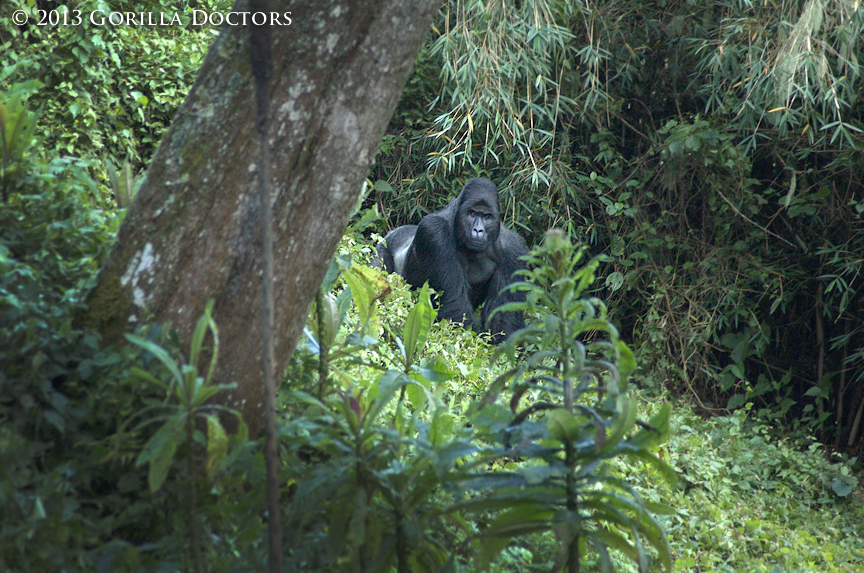Monitoring the Mt. Tshiabirimu Gorillas in DRC
By Gorilla Doctors Staff on Wednesday, December 4th, 2013 in Blog.Gorilla Doctors continues to monitor the the last remaining Grauer’s gorillas in the isolated forest of Mt. Tshiaibirimu outside of Virunga National Park. Previously separated into two groups named Kipura and Katsabara, the 6 remaining individuals appear to have joined into one group recently. Silverback Tshongo, who disappeared two months ago, has not been located, and unfortunately trackers found abundant evidence of poaching in the area during the time of his disappearance. For more details on the Mt. Tshia Grauer’s gorillas, visit this Gorilla Doctors blog.
Dr. Martin traveled to Mt. Tshiabirimu to assess the health of these gorillas recently. Here is his report:
“On Wednesday, November 27th, I trekked to Kipura group for a routine health check. I spoke with the ICCN trackers about silverback Tshongo and they informed me that more than 200 snares were found in the area at the time. Even during my visit, I observed many traces of poachers. The ICCN officer informed me that their team needs to be larger in order to cover all the patrols in the Tshiabirimu sector. ICCN is currently recruiting new rangers and after training, some individuals will be assigned to Tshiabirimu.
We found the gorillas in the Mabono area of the forest, two hours from Kalibina, the ICCN patrol post. When we located the night nests, it was clear that Kipura and Katsabara groups are nesting together. When we reached the gorillas, we observed Kambula, Mukokya and Mwasananinya from Kipura group, but the Katsabara group gorillas were not seen.
 Mukokya watching Dr. Martin and the team of ICCN trackers.
Mukokya watching Dr. Martin and the team of ICCN trackers.
 Kambula resting in the bushes.
Kambula resting in the bushes.
The following day, we trekked to the Mt. Tshia gorillas once again. This time, we were able to locate the Katsabara group gorillas. We decided to trek earlier in the morning to see if we could catch the gorillas still in their night nests. Unfortunately, the group was too far from the patrol post and we were not able to reach them before they left their night nests. We did, however, observe the two groups merged together for a time.
The gorillas were feeding when we arrived. Silverback Katsabara immediately charged us. Female Mwengesyali began crying and moved quickly away from us with her infant clinging to her back. This reaction is to be expected, as these gorillas are not habituated to human presence. Silverback Katsabara remained behind with the three gorillas from Kipura group for a time, and then joined Mwengesyali and her infant in the thick vegetation.”
 Silverback Katsabara watching the team.
Silverback Katsabara watching the team. Mukokya and Kambula on Mt. Tshiabirimu.
Mukokya and Kambula on Mt. Tshiabirimu. Mwasananainya watching the team.
Mwasananainya watching the team.
You can follow the Gorilla Doctors health monitoring efforts on our Facebook page, where we post photos and notes from our monthly visits.
Please consider supporting us by making a secure online donation. Every dollar you give goes to directly supporting our gorilla health programs and One Health initiative. Thank you for your generosity.


 Donate
Donate